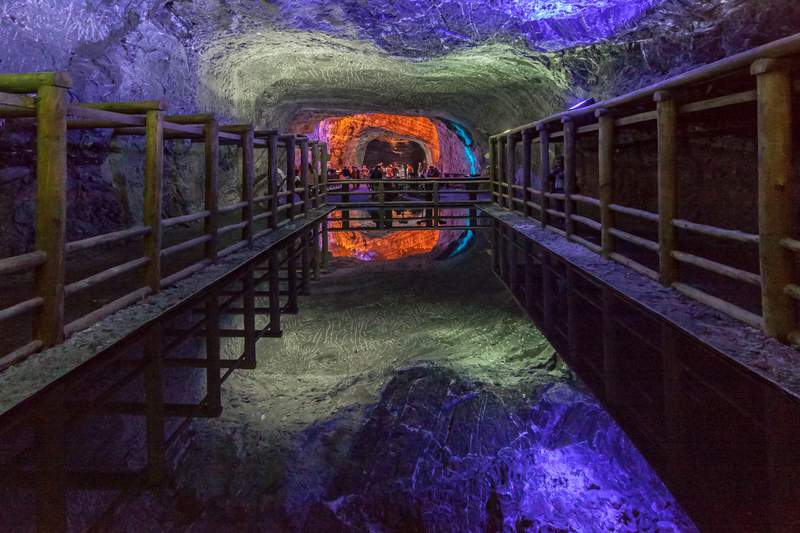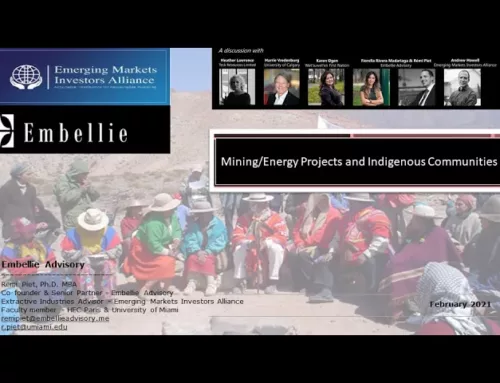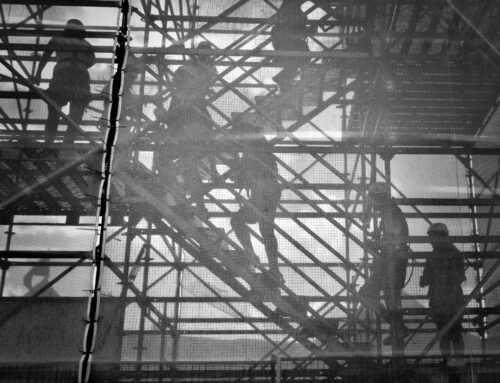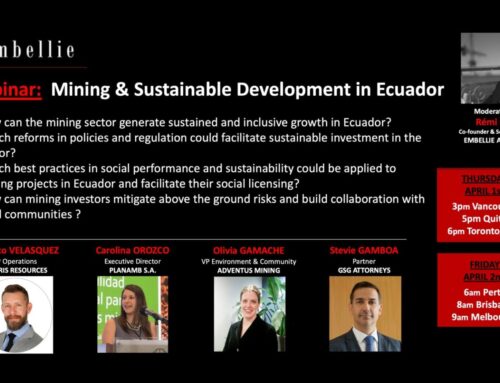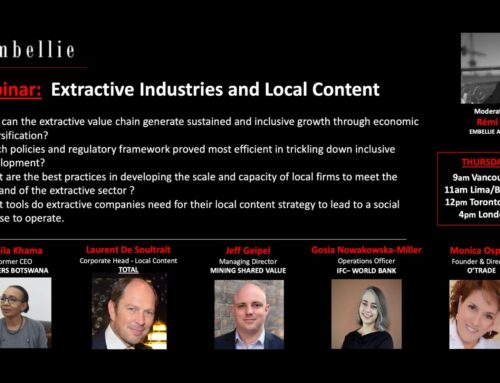Latin America Mining Risk Part Ii: Regulatory Instability
Note: The following article is the second leg of a 7-part series analyzing license to operate risks facing miners and mining investors today in Latin America. While our first piece addressed the impact of political interference on mining projects, this article dissects the variety of regulatory hurdles, administrative difficulties and legal obstacles that can impede or derail an otherwise profitable investment.
Mining projects can endure for decades leaving an indelible mark on both community and the environment. In Latin America, mining carries complex historic baggage not found in other parts of the world. As a result, extractive industries are closely regulated in Latin America. At a project’s early stages, there are time-consuming studies required to predict and measure the impact of a mine on the economy, social fabric and the environment. In recent years, regulations in Latin America have grown more onerous for miners. From 2010 to 2017, the number of permits required to launch a mine in Peru grew by four-fold.
Regulatory and legal risks can originate from a variety of dimensions: the absence of predictable property rights and fiscal pressures on the national or state governments being a couple of root causes. Regulatory risk can also originate from a corrupted rule of law and lack of transparency. Such environments enrich the few who control regulators and key government entities but ultimately tax and disincentivize foreign investment.
Land and Minerals Property Rights
The most important regulatory feature is the clear definition of ownership regimes over land and mineral production. Two models compete. First, a lease or “regalien” system in which the state owns the mineral title and the miner derives his or her right to extract minerals from a tenure granted by the government. This model is predominant in Latin America. In Brazil however, mineral ownership corresponds with landownership. Under their system, he who owns the land has the right to hold, extract, or dispose of the minerals. This system, commonly referred to as the claim or “accession” system, allows a mining company to obtain private mineral rights by discovering the minerals and registering its claim at a designated office.
From the initial stages of prospection, miners need to protect themselves against a sudden change in the rules governing property and ore ownership. If there is a political change, holding onto secured land or mining rights can get complicated. In Brazil, for example, a proposed reform under debate might require foreign miners to share ownership with a local partner. In Venezuela, foreign investors can at best hold 45% of a joint venture with a state entity, exposing investors to possible expropriation.
When it comes to leasing agreements, it is recommended to pursue a license of at least 20 years. An initial term of five years for exploration should be automatically renewed if discovered resources show signs of a commercially viable mining site. Governments may try to include clauses to condition the renewal of the license to a code of good behavior and to the acceptation by the local community of resource exploitation. Though well intended, such clauses are flawed by their subjectivity that can be manipulated by corrupt regulators and government officials.
Even when agreements on land property and management of resources are signed, they can be readjusted by new governments. For example, in Tanzania, the modification of regulations in terms of export of unprocessed mineral ores from the country hurt mining companies’ profitability. Similarly, the Indonesian government introduced changes to its mining regulatory regime in 2014, which included a ban on the export of certain unprocessed minerals from the country to foster the growth of mineral processing within the country. Similar developments could happen in Latin America and should be mitigated within concession agreements.
Fiscal Regimes and Revenue Distribution
A sudden hike in royalties and taxes will also jeopardize a mining operation. In Ecuador, the Correa administration attempted in 2013 to impose an oil sector designed windfall tax on mining companies. This move led to a confrontation with Kinross, owners of the Fruta del Norte project. Both sides ended up losing big after a two-year long standoff. Kinross left the country, selling its construction-ready Fruta del Norte development for just US$240mn, about 25% of what it paid to acquire the project in 2008. In parallel, IAMGOLD divested its Loma Larga project and left Ecuador, and shortly afterwards, International Minerals sold its Río Blanco gold project. As a result, the Ecuadorian government lost both valuable foreign investment and tarnished its international reputation, leaving gold sites to environmentally hazardous illegal miners.
The renegotiation of royalties is not a rare occurrence when mineral prices rise above historic averages. Regulatory risk is present in all levels of government and regulations from local to national level. When local governments do not receive their contracted share of royalties (a common occurrence with mineral prices drop), then they will pressure the miner with the use of dubious regulatory enforcement. In Colombia, the Santos administration perceived that royalties were being spent corruptly by a few mining municipalities and passed legislation to share all royalties across the country. Local mining communities have been furious ever since and with few exceptions have universally worked to oppose mining projects. Today there are more than 50 local referenda planned to oppose mining across Latin America. Roughly half are in Colombia.
Required Assessment – Environmental Licensing
An Environmental License is typically granted by a national ministry or regulator. Multiple environmental impact assessments are required: impact on fauna and flora; impact on protected habitats; impact on water supplies, among others. Submitting all needed preliminary research, respecting a thorough scientific methodology, is always a lengthy process. However, it is crucial to meticulously respect assessments and submission processes to avoid litigation from NGOs or environmental hazards that would damage a company’s reputation.
Moreover, environmental licenses are often complemented by a range of additional authorizations depending on the neighboring geography and type of exploitation planned. An underground water prospecting and exploitation permit can be requested, as well as a surface or underground water concession for ongoing usage. If the site is in a forested area, a forestry exploitation permit is often required. Finally, additional important assessments usually include a wastewater release permit application and an atmospheric emissions assessment.
During the long run of high mineral prices (2003-2013), almost every mining jurisdiction in LatAm grew more demanding of pre-development environmental studies and assessments. The shift took many countries from an under-regulated status to arguably an over-regulated environment. In French Guiana, miners face onerous assessments to both develop their mines as well as build roads and infrastructure to access them.
Required Assessment – Social License
Some miners have been caught off guard by the rigidity of environmental assessments but a more common obstacle has been mining opposition over their “social license” to operate: a gathering of socio-economic criteria assessing the impact on the economic well-being and traditions of communities living on site.
Politicians sometimes push for increased consultation of indigenous communities to gain electoral support. Yet prior consultation has become more than a populist strategy with the ratification by most Latin American countries of the International Labor Organization convention 169. This text grants indigenous peoples the fundamental right to decide on projects to be carried out in their territories (or where their lands are affected) and to participate in the decision-making processes.
A mining company’s “social license to operate” (SLO) has therefore become a dynamic threat, obliging miners to constantly monitor the demands and attitudes of local communities. Globalized social media has created a platform for local communities to vent their frustration, capturing the imagination of many urban voters in their countries and abroad – further straining the reputation of miners. High profile accidents such as tailings dam failures and cyanide contamination, often sloppily reported by amateur journalists or concerned citizens aggravates the well rooted anti-mining sentiment in many countries.
In Peru, the Southern Copper’s on-again, off-again $1.4 billion Tia Maria copper project faced this gradual increase of regulatory demands. For years protesters marched and blocked highways in opposition to the proposed mine, arguing it could pollute and drain key waterways. In response, Southern Copper reworked its project several times to gain regulatory approval. Victory seemed within reach in August 2014 when the Peruvian national government declared that Southern Copper had complied with all the demands brought forward by locals and environmentalists. Yet, fresh demonstrations broke in March 2015 forcing Southern Copper, tired of ongoing “anti-mining terrorism” in the area, to withdraw its participation in the project.
Southern Copper took a legal/compliance approach that did comply with all the regulations but perhaps failed to recognize the local angst behind the political pressures that brought on those regulations. By contrast, in Colombia, Red Eagle Mining swiftly gained the support of the regulators and local community by engaging in a small-scale underground project. Regulations did not prohibit open-pit mining but the local community voiced their strong objection to open pits, so Red Eagle adjusted their plans. Gran Colombia Gold took the opposite approach by trying to enforce a top down strategy relying on support in Bogota and disregarding local demands for environmental protection and economic development. As a result, after years of conflict, the company’s open pit Marmato project is in jeopardy after the government of Colombia forced the company to halt operations until further consultation with locals is realized. The legal counteroffensive from the company, seeking $700 million in compensations, may never bear fruit.
Red Tape and Corrupt Rule of Law
Regulatory risks, leading to additional costs and delays, are not always the direct result of local demands or quantifiable objective environmental or social requirements. In many cases, they are caused by good old fashioned red tape, which grants negotiating power to mid-level bureaucrats looking for a bribe. Other times, red tape delays are intentionally driven by higher level politicians and national government officials looking to extract a larger bribe or deliver a political/economic punch against the incumbent government that supports the project.
In Brazil, red tape is notorious but the country also has a fairly autonomous judiciary system. Most state governments promise an official response within 30 days of any kind of permit application or request. Some miners have taken to suing governments that do not comply with the 30-day limit. The method is quite effective in some mining states in Brazil.
Some jurisdictions operate under a “single window” approach where miners go to one stop to obtain all of their permits. But others stand out as old fashioned and complicated. Mexican miners complain that they submit the same paperwork to multiple regulators and government offices. A similar criticism is made of French Guiana where the mining code combines Napoleonic rules and elements like the “precautionary principle” that obliges lengthy preliminary assessments for any mining development.
In conclusion, regulatory risks are really a manifestation of deeper political and social opposition to mining and an historic distrust of the sector. Miners who focus on a legal approach to managing regulations fail to see that regulatory risk will never end so long as influential figures oppose your mining project. Regulations in Latin America are not written for the long term but rather as a tool to achieve a shorter term political or commercial end. Combatting regulatory risk ultimately requires a more comprehensive effort to build support for one’s mining project from all influential players operating in a jurisdiction, including public opinion. Only once a mine earns its license to operate will it achieve regulatory stability.
Contact our consulting practice to learn how AMI can help you identify, understand and mitigate the risks associated with natural resource investment in Latin America.

Dr. Remi Piet is a Director at Americas Market Intelligence (AMI) and co-leader of the firm’s Natural Resources and Infrastructure Practice. Remi leads political and other risk analysis activities for the mining, energy and infrastructure sectors in Latin America. He has worked on projects in more than 60 countries across Latin America, Asia and Europe and taught at several universities including the University of Miami, HEC (Paris) and Qatar University. Be it a snapshot country and counterparty risk analysis ahead of an asset purchase or the on-going monitoring of on-the-ground risks for miners and energy players, Remi leads the design and execution of bespoke engagements for our clients.

